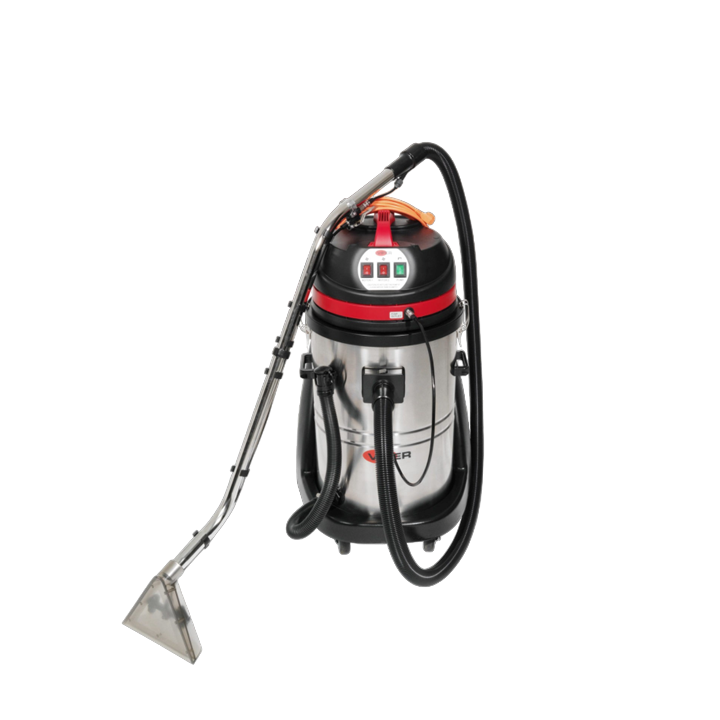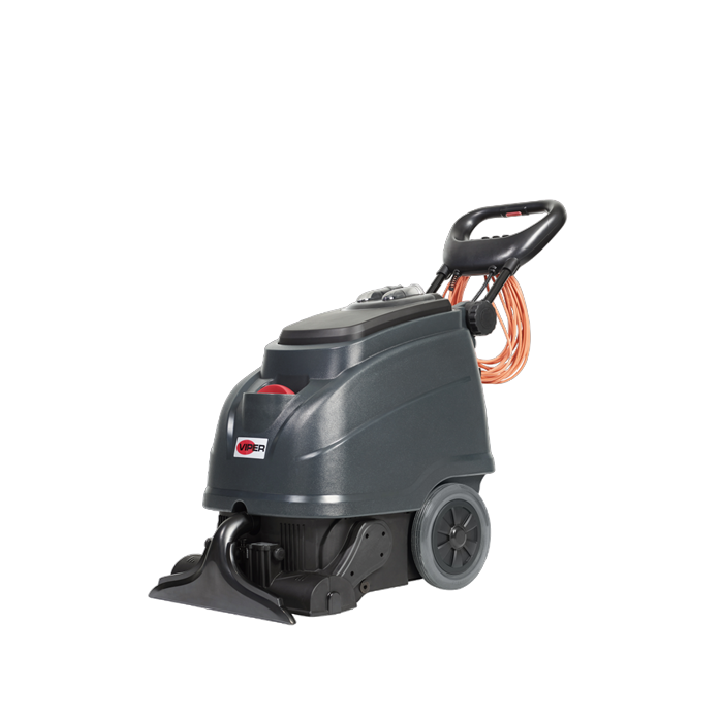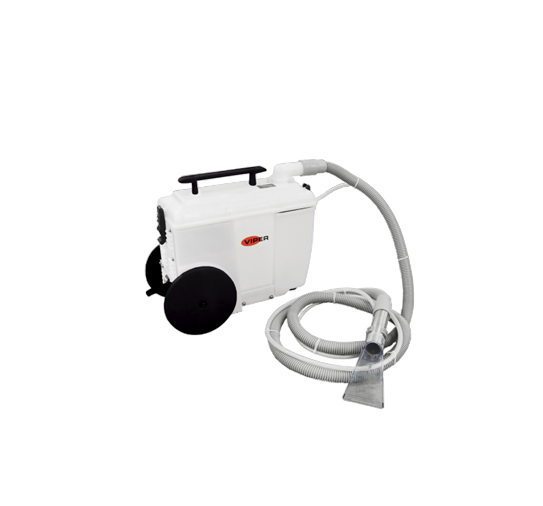A Comprehensive Guide to Carpet Extraction Machines: Understanding Types and Uses
Carpets add comfort and elegance to homes and commercial spaces, but they also require regular maintenance to keep them looking clean and fresh. One essential tool for maintaining carpets is the carpet extraction machine. In this comprehensive guide, we will delve into what carpet extraction machines are, their uses, and the different types available in the market.
What Are Carpet Extraction Machines?
Carpet extraction machines, often referred to as carpet cleaners or carpet shampooers, are specialized devices designed to clean and revitalize carpets and upholstery. They use a combination of water, detergent, and suction to remove dirt, stains, and allergens from deep within the carpet fibres. These machines are widely used in both residential and commercial settings to maintain the cleanliness and hygiene of carpets.
The Uses of Carpet Extraction Machines
Carpet extraction machines serve various purposes, making them indispensable tools for homeowners, business owners, and professional cleaning services. Here are some of the primary uses of carpet extraction machines:
1. Routine Carpet Cleaning
Routine cleaning is essential to prevent the accumulation of dust, dirt, and allergens in carpets. Carpet extraction machines are ideal for regular maintenance, as they effectively remove embedded particles and help carpets look their best.
2. Stain Removal
Accidents happen, and spills or stains on carpets are common occurrences. Carpet extraction machines are equipped to tackle tough stains, whether they are from spilled wine, coffee, pet accidents, or other sources. The combination of hot water and cleaning solutions helps break down and extract stains effectively.
3. Odour Removal
Carpets can trap unpleasant odours over time, particularly in high-traffic areas or homes with pets. Carpet extraction machines can help eliminate odours by removing the source of the smell, such as pet urine or food spills, and leaving the carpet fresh and odour-free.
4. Deep Cleaning
Periodic deep cleaning is essential to maintain the longevity of carpets. Carpet extraction machines can reach deep into the fibres, extracting dirt and contaminants that regular vacuuming may miss. This deep cleaning process helps prolong the life of the carpet and maintains its appearance.
5. Allergen Reduction
Carpets can harbour allergens like dust mites, pollen, and pet dander, which can trigger allergies and respiratory issues. Carpet extraction machines with HEPA filters can effectively reduce allergen levels, creating a healthier indoor environment.
6. Commercial and Industrial Cleaning
In commercial settings such as offices, hotels, restaurants, and healthcare facilities, maintaining clean and presentable carpets is crucial for a positive impression on customers and clients. Carpet extraction machines designed for commercial use can handle large areas efficiently.
Different Types of Carpet Extraction Machines
Carpet extraction machines come in various types, each suited to specific cleaning needs and preferences. Understanding the different types will help you choose the right machine for your requirements.
1. Portable Carpet Extractors:
- Usage: Portable carpet extractors are versatile and suitable for both residential and commercial use. They are commonly used by homeowners and small businesses.
- Portability: These machines are compact and easy to move, making them convenient for spot cleaning or accessing hard-to-reach areas.
- Tank Capacity: Portable extractors typically have smaller water and solution tanks compared to larger units. This makes them ideal for smaller cleaning tasks.
2. Walk-Behind Carpet Extractors:
- Usage: Walk-behind carpet extractors are designed for larger cleaning jobs in commercial and industrial settings, such as offices, hotels, and large retail spaces.
- Efficiency: They are more powerful and efficient than portable extractors, with larger tanks for extended cleaning sessions.
- Manoeuvrability: Although not as mobile as portable units, walk-behind extractors are designed to be pushed or pulled, making them suitable for covering larger areas.
3. Truck-Mounted Carpet Extractors:
- Usage: These heavy-duty machines are typically used by professional carpet cleaning services for deep and thorough cleaning in large commercial spaces.
- Power: Truck-mounted extractors are the most powerful option, as they are directly powered by the service vehicle’s engine. They provide exceptional cleaning results.
- Large Capacity: They have large water and solution tanks, minimizing the need for frequent refills and ensuring uninterrupted cleaning.
4. Upright Carpet Cleaners:
- Usage: Upright carpet cleaners are designed for residential use and are similar in appearance to traditional vacuum cleaners.
- Convenience: They are easy to store and manoeuvre, making them a popular choice for homeowners looking to maintain their carpets.
- Two-in-One Functionality: Many upright carpet cleaners have a dual function, serving as both carpet cleaners and vacuum cleaners.
5. Handheld Carpet Spot Cleaners:
- Usage: Handheld spot cleaners are compact, portable devices used for tackling small stains and spills quickly.
- Portability: They are incredibly lightweight and easy to carry, making them perfect for spot cleaning in homes and vehicles.
- Spot Cleaning: These machines are ideal for addressing fresh stains before they set in and become more challenging to remove.
6. Rental Carpet Extractors:
- Usage: Rental carpet extractors are available at home improvement stores and rental centres for temporary use. They are commonly used by homeowners who want to deep clean their carpets periodically.
- Affordability: Renting a carpet extractor can be cost-effective for occasional use, avoiding the need for a long-term investment in a machine.
- Variety: Rental centres offer a range of carpet extractors, allowing users to choose the appropriate machine for their needs.
Key Features to Consider
When selecting a carpet extraction machine, there are several essential features to consider to ensure it meets your specific requirements:
1. Cleaning Method:
- Choose between hot water extraction (steam cleaning) and cold water extraction. Hot water extraction is more effective for deep cleaning, while cold water extraction may be gentler on delicate carpets.
2. Tank Capacity:
- Consider the size of the water and solution tanks. Larger tanks are more suitable for larger cleaning tasks, as they require fewer refills.
3. Suction Power:
- Look for machines with strong suction capabilities to ensure efficient water and dirt removal.
4. Cleaning Path Width:
- For larger areas, a wider cleaning path can reduce cleaning time.
5. Heating Element:
- If you opt for hot water extraction, choose a machine with a built-in heating element to maintain consistent water temperature throughout the cleaning process.
6. Attachments and Accessories:
- Check for additional attachments and accessories, such as upholstery tools and extension wands, to make the machine more versatile.
7. Cord Length or Battery Life:
- Ensure the machine’s power source suits your needs, whether it’s a long cord for extended reach or a sufficient battery life for cordless models.
8. Weight and Manoeuvrability:
- Consider the weight and ease of manoeuvring the machine, especially if you need to transport it up and down stairs.
9. Noise Level:
- Some carpet extractors can be noisy, so if noise is a concern, choose a quieter model.
Maintaining Your Carpet Extraction Machine
Proper maintenance is essential to ensure the longevity and effectiveness of your carpet extraction machine. Here are some tips for keeping your machine in top condition:
- Regular Cleaning: After each use, clean the machine’s tanks, hoses, and nozzles to prevent the buildup of residue and bacteria.
- Filter Replacement: If your machine has a filter, replace it as recommended by the manufacturer to maintain optimal suction.
- Emptying and Drying Tanks: Always empty and rinse the water and solution tanks after use to prevent mold and mildew growth. Leave the tanks open to air dry.
- Hose Inspection: Regularly check the hoses and connections for clogs or damage. Replace any damaged parts promptly.
- Storage: Store the machine in a clean, dry, and well-ventilated area to prevent mold growth and ensure it stays in good working condition.
- Scheduled Maintenance: Follow the manufacturer’s recommended maintenance schedule for your specific machine.
Conclusion
Carpet extraction machines are indispensable tools for maintaining the cleanliness, hygiene, and appearance of carpets and upholstery. Whether you’re a homeowner, business owner, or professional cleaner, understanding the different types of carpet extractors and their uses will help you make an informed choice. Consider your cleaning needs, the size of the area to be cleaned, and the specific features that matter most to you when selecting the right carpet extraction machine. With proper maintenance, your machine will continue to deliver effective results, keeping your carpets looking and feeling fresh for years to come.
If you have any further questions about carpet extractors or need any advice or help, please get in touch with our friendly team of experts here at Beta Solutions Ltd and we will be happy to help.













